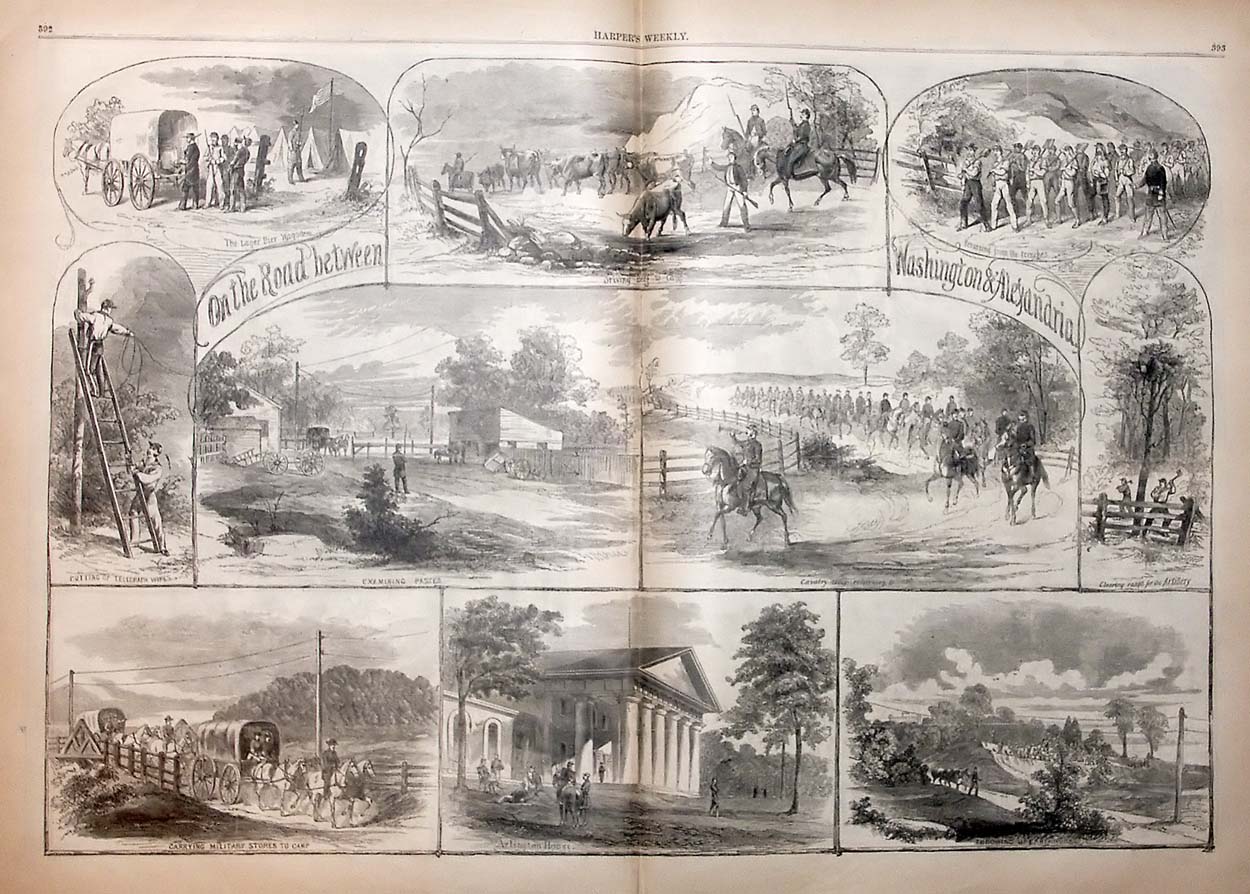 |
| Scenes from Alexandria and Washington, from the June 22 edition of Harper's Ferry |
June 20, Charles P. Stone reported to Assistant Adjutant General Edward Townsend that his special messenger had arrived at Harper's Ferry and found it "completely deserted, except by a few poor families." In reference to Robert Patterson's ongoing failure to secure the far end of the cordon, he observed dryly "there were no troops of the United States at or near that place."
Stone was operating off the assumption that the Confederate troops formerly occupying Harper's Ferry were on their way to join those Confederates behind Bull Run under Brigadier General G.T. Beauregard to unite for an attack. In fact, despite Beauregard's best efforts, the troops under Brigadier General Joe Johnston were centered around Winchester and not on their way to joining him.
When Beauregard took over the forces around Manassas Junction there were only a few thousand and went by the name "the Alexandria Line." The rather fanciful name was in the mold of American and European military tradition of old, where regiments of soldiers were named based on their order in the line of battle. In the American Revolution, the "Virginia Line" - Virginia's contribution to the Continental Army - had won renown, so it isn't surprising that when the militia units of northeast Virginia coordinated their activities they named themselves in a similar mode.
But like the U.S. Army, the Confederate States divided their regiments up by territory. Beauregard's area of responsibility became identified as the Department of the Potomac consisting of Prince William, Fairfax, and Loudon Counties. He now had twenty regiments of infantry (plus Eppa Hunton's 8th Virginia at Leesburg) totaling near 15,000 men, up from the two regiments and assorted militia from the beginning of June.
Now, on June 20, he had taken steps to organize his department into an army. His chief of staff and acting assistant adjutant general, Colonel Thomas Jordan, issued Beauregard's General Orders, No. 20, to form the Army of the Potomac, named after the department it would operate in. The name confounds casual Civil War tourists at Manassas National Battlefield to this day, since the most famous Union Army would have the same name (on June 20, 1861, the North's Department of the Potomac was divided among the Departments of Pennsylvania, Northeastern Virginia, and Washington).
Rather than command each of his twenty regiments individually, Beauregard grouped them into six brigades. From the Italian word "brigata" for "troop", this would allow him to delegate responsibility for specific missions. For the job of trusted subordinates, Beauregard had turned to men of different backgrounds. Former South Carolina Congressman Milledge Bonham was given the honor of the first brigade, Fauquier County native Dick Ewell the second, and South Carolinian and nephew of the former General and President Zachary Taylor David "Neighbor" Jones took the third. All had been promoted to brigadier general just a few days earlier by Jefferson Davis with a slew of other West Point graduates. The remaining three brigades were to be led by colonels: Virginia militiaman G.H. Terrett, original commander of the Alexandria Line Philip St. George Cocke, and the infamously obstinate Lynchburg lawyer Jubal Early.
Beauregard decided not to further group the brigades into the next highest group "divisions". Typically, American armies hadn't been big enough to warrant divisions, though both the armies of Winfield Scott and Zachary Taylor in Mexico had had the groupings that were standard in European armies.
Beauregard had, however, optimistically termed his forces the "First Corps" of the Army of the Potomac. Napoleon had popularized the concept of the corps, a self-sufficient subdivision of an army that allowed greater strategic flexibility. Now if he could find a "Second Corps", he would be ready to fight.

No comments:
Post a Comment